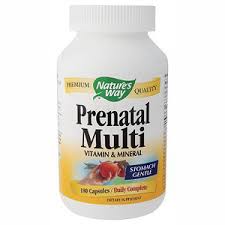Once you are in active labour and are having regular, painful contractions, you can receive an epidural. An anesthesiologist is responsible for providing and overseeing this medication. He or she will explain the procedure to you and the types of epidurals available. The anesthesiologist will ask questions to ensure that there are no medical reasons you should not have an epidural, and will ask you about your concerns.
How an Epidural is Given
The epidural space surrounds the spinal cord. It is located using a special needle, which is passed between the bones of the spine, a few inches above the tailbone. The labour nurse will help you get into the best position, either lying on your side or sitting. It will take a few minutes to insert the epidural. After washing your lower back with antiseptic and freezing the skin, the needle will be inserted. A thin, flexible tube (the epidural catheter) will be passed through the needle, which is then removed. Local anesthetic ('freezing') will be injected through the tube, which is secured with tape. At this point, nothing hard or sharp will remain in your back.
The Effects of an Epidural
It takes between five and 30 minutes for the epidural to start working. During this early stage, you will feel warmth and tingling in the legs, followed by pain relief. As little medication as possible is used to relieve the pain, but some women will notice that their legs start to feel heavy.
The initial dose of freezing may last up to two hours. To prevent the pain from returning, medication is given continuously through the catheter. If the pain returns in spite of continuous medication, the dose can be increased. When it is time to push with the contractions, the dose of medication may be reduced or the medication may be stopped, as the numbness produced by the epidural can make it difficult to push.
Side Effects and Complications
An epidural is usually very safe for both mother and baby, but there are side effects and a small risk of complications, even when the best technique is followed. A possible drawback of an epidural is that it can slow down the labour process, which, in turn, can increase the need for forceps or even a cesarean section.
There are also a number of possible complications to be aware of:
Low blood pressure is the most common side effect of epidural anesthesia. You will be given fluids intravenously to prevent this complication. Your blood pressure will be monitored carefully. If your blood pressure does drop, you may be given IV fluids and medication to counteract the problem.
Shivering is not a serious side effect, but it is a common one. It usually occurs in the first hour after having an epidural and is associated with prolonged or advanced labour. An extra blanket may help!
Bladder control may be lost temporarily during labour, if you can't feel that your bladder is full. A urinary catheter may be needed.
If pain relief is inadequate even after the epidural, the catheter may have to be adjusted. Three percent of women experience no pain relief at all. If a woman who is having a cesarean section experiences inadequate pain relief she will be given nitrous oxide, or a local or general anesthesia.
Back pain after the birth is often attributed to the epidural, but is most often related to the labour and birth itself. However, a difficult epidural insertion may cause bruising between the bones of the spine, producing a lower back pain that usually lasts a few days.
An epidural may cause a headache if the needle goes deeper than the epidural space and causes the spinal fluid to leak. This headache is severe and, without treatment, it may last more than a week. Fortunately, an effective treatment, called a “blood patch,” is available. Your blood can be injected into the epidural space to relieve your headache. The risk of having this type of headache is approximately one in 200.
Nerve damage may cause prolonged numbness or partial weakness in one leg, which can last several weeks. It occurs after one out of every 2500 births. It is usually caused by pressure from the baby, on the nerves in the pelvis. However, it can, rarely, be caused by pressure from the epidural catheter on a nerve in the back. Tell your caregiver before you leave the hospital if your legs do not completely return to normal. In rare cases, permanent nerve damage can result in the area where the catheter was inserted.
Severe injury is rare. Severe drug reactions, such as convulsions, occur in one out of every 10,000 cases. Severe brain damage, coma, paralysis or death is even less common: about one case in 100,000. Note that the risk of severe injury or death due to an epidural is about the same as the risk of dying in a car ride.
www.womenshealthmatters.ca










 When is the best time to conceive a baby? Even though there are thousands of women who seem to get pregnant just looking at their mate, there are also countless women who find it very difficult. The window of time when a woman is actually able to conceive a child is actually very small. The key to success is to understand exactly how your cycle works and use that knowledge to your advantage.
When is the best time to conceive a baby? Even though there are thousands of women who seem to get pregnant just looking at their mate, there are also countless women who find it very difficult. The window of time when a woman is actually able to conceive a child is actually very small. The key to success is to understand exactly how your cycle works and use that knowledge to your advantage.
